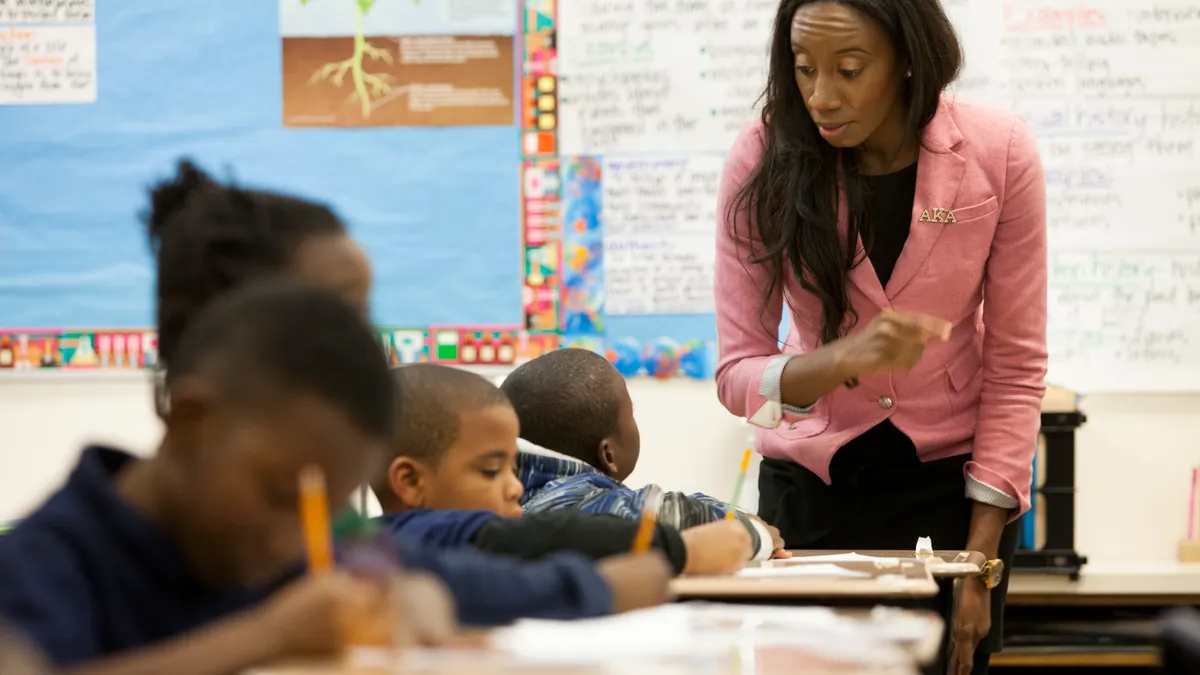Dive Brief:
- A study published Thursday in the journal Educational Evaluation and Policy Analysis found teacher evaluation practices unfairly penalized Black teachers in Chicago Public Schools for teaching in low-income, disadvantaged neighborhoods. The typical Black Chicago teacher ranked in the 37th percentile of teacher observation scores, compared to the typical White teacher’s 55th percentile ranking.
- After researchers controlled the differences for factors such as academic achievement, poverty and student misconduct rates, however, the gap statistically disappeared. The study found 89% of the Black/White gap in classroom observation scores was driven by differences between the schools where the teachers worked.
- The accuracy of the observation scores is important because they are often tied to tenure and promotions. The study's authors suggest teachers of color may not seek jobs in these neighborhoods if they feel their observation scores will suffer.
Dive Insight:
Rating teachers based on student performance unfairly penalizes educators teaching in schools primarily serving students who face adverse experiences like poverty and violence, writes Kimberly Quick, a senior policy associate for The Century Foundation, a progressive think tank.
For example, the IMPACT teacher evaluation method implemented in District of Columbia Public Schools in 2009 has received criticism in retrospect for not recognizing that teachers in low-income schools deal with challenges their peers in more affluent schools don’t face.
Students in these schools often face food insecurity, are sick more often, experience homelessness, or are more likely to have an incarcerated parent. They are also more likely to have unreliable access to high-speed home internet, which affects their ability to do homework, and they tend to have lower vocabularies. Older students in these schools may also be responsible for watching younger siblings.
There are plenty of lessons to be learned from prior mistakes with teacher evaluation models, as detailed in Phi Delta Kappan, a journal about K-12 practices. Inconsistent findings can, for example, point to deeper flaws in a system like the value-added model (VAM).
Though its approach to comparing students' scores for apples-to-apples measurements may seem fair on paper, 15 lawsuits argued the model fell short. One such case, argued before the New York Supreme Court, ended with the court ruling the state's VAM score-based system was “arbitrary and capricious" and "taken without sound basis in reason or regard to the facts."
Also, according to the article in Phi Delta Kappan, if teachers are working with high-scoring students, it’s difficult to show improvement, and that may also reflect negatively on an educator's evaluation under some models. Teacher evaluations can sometimes also be manipulated to inflate success.
One lawmaker who formerly advocated for tying teacher evaluation ratings to student success has had a change of heart. Republican Pennsylvania State Sen. Ryan Aument said that though he doesn’t think poverty should be used as an excuse for poor test scores, he now believes teachers make important impacts on students regardless of academic success and he wants teachers to be inspired to remain in high-poverty schools.










 Dive Awards
Dive Awards




